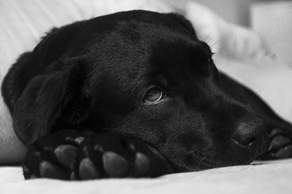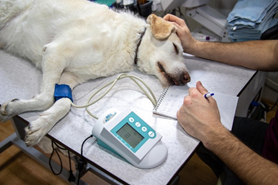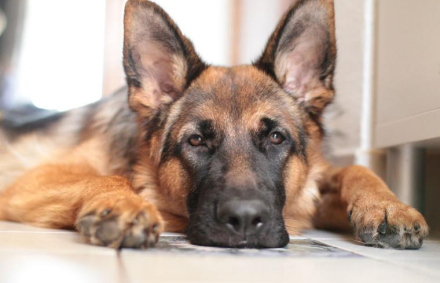
The effective treatment of canine leishmaniasis requires you to follow your vet's instructions to the letter, not only to prevent relapses, but also to stop your faithful companion becoming a source of the disease.
The wise say, "better safe than sorry". Unfortunately, sometimes we find ourselves on the wrong side of the saying. Leishmaniasis is caused by Leishmania protozoa, and is transmitted by the sandfly, a small insect that lurks virtually all over Spain. Although this disease can be prevented (with insect repellent collars and vaccination), your dog could become infected if, for example, you didn't know about the preventive measures or you rescued your best friend from the street. What to do in these cases? How to prevent leishmaniasis from becoming a bigger problem? Here we explain everything in a simple and practical guide.
Diagnosis and treatment of canine leishmaniasis
This disease can present in different ways: from skin lesions to dangerous systemic manifestations, like kidney failure. As the symptoms of leishmaniasis are not specific, laboratory tests are needed for diagnosis. However, the most common are weight loss, fever, diarrhoea, hair loss (especially around the eyes, snout and ears), vomiting and nosebleeds.
As soon as the vet has a definite diagnosis, they'll prescribe the medications, and these must be administered exactly according to their instructions. Treatment for canine leishmaniasis is long and can take several months, although the length of time will also depend on the stage of the disease. It's also very important to remember that drugs do not always manage to get rid of the parasite completely, so recurrences (or relapses) are common.

Looking after a dog with leishmaniasis
Although it can also affect humans, the first thing to remember is you cannot get leishmaniasis from direct contact with your furry friend. You can hug them, live with them and give them all the love they deserve.
Lots of dogs manage to lead almost normal lives, even if the disease stays with them for many years. However, as responsible owners, it's really important that you monitor their state of health with the vet, as depending on how well they do, they may need a new round of medications.
Why is it so important to follow the treatment to the letter?
There are three main reasons why you must not skip the treatment prescribed by your vet: drug resistance, relapses and contribution to the reservoir. We'll take a closer look at each of these problems.
When you give antibiotics, you have to do it at the precise dose and for the necessary time. If you don't do that, you could contribute to the parasites developing resistance to these drugs. This principle doesn't just apply to leishmaniasis, but to all infectious diseases. In fact, this is one of the biggest threats to world health today. The pathogens responsible for diseases that we thought were a thing of the past, like tuberculosis, have become more difficult to combat, mainly due to the abuse of antibiotics, and Leishmania is no exception[1]. Using any drug correctly and rationally is the responsibility of all of us.
If the leishmaniasis treatment is not followed properly, though the symptoms may diminish or even disappear, this will often simply be a temporary effect, as the door will have been left open for the parasite to resurface and cause problems again. In fact, it's not uncommon, when you see that your pet is much better, for you to think the treatment is no longer necessary and you stop giving it altogether. Mistake!

Finally, a dog infected with Leishmania contributes to the reservoir of the disease and also therefore to its spread through the bite of the sandfly. As it is not always possible to get rid of the parasite completely, adequate, well-administered treatment will decrease the levels of Leishmania to the point that your friend will not be a source of infection.
Prevention, even if they have already suffered from leishmaniasis
As well as the treatment, even if the animal is cured, it's crucial to continue taking the necessary preventive measures, especially if you live in a high-risk area; you know now that a single sandfly bite is enough to re-infect your best friend. Therefore, the use of quality repellent collars is essential, especially if your pet is seropositive for the disease (if their blood test was positive), as the vaccine is not indicated in those cases.
With leishmaniasis ... you have to keep preventing it even after the cure!
[1] Ponte-Sucre, A., Gamarro, F., Dujardin J. C., Barrett, M. P., López-Vélez, R., García-Hernández, R., Pountain, A. W., Mwenechanya, R. and Papadopoulou, B. (2017). Drug Resistance and Treatment Failure in Leishmaniasis: A 21st Century Challenge. PLoS Neglected Tropical Diseases, 11(12). https://doi.org/10.1371/journal.pntd.0006052



